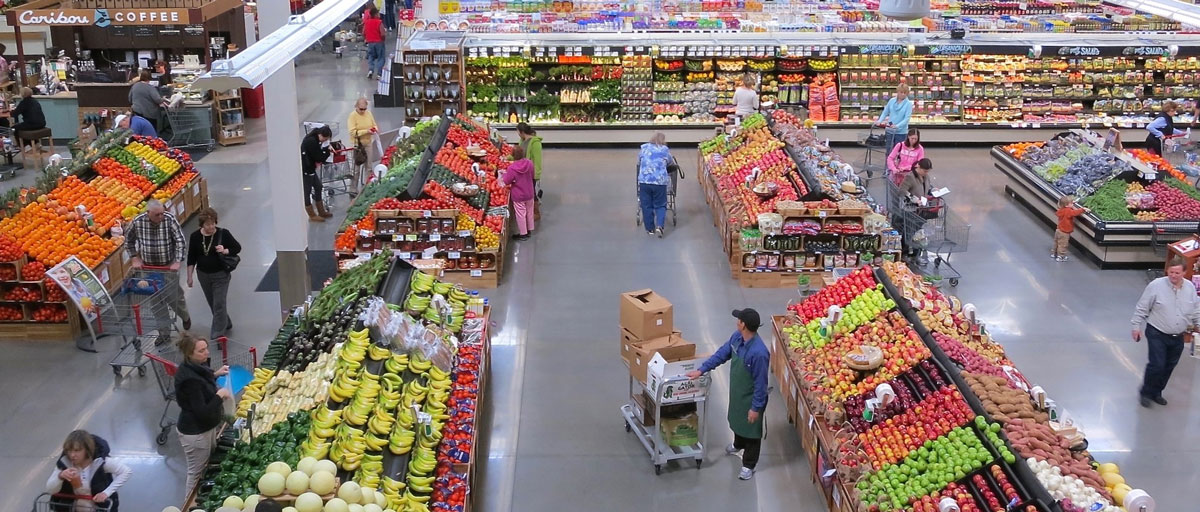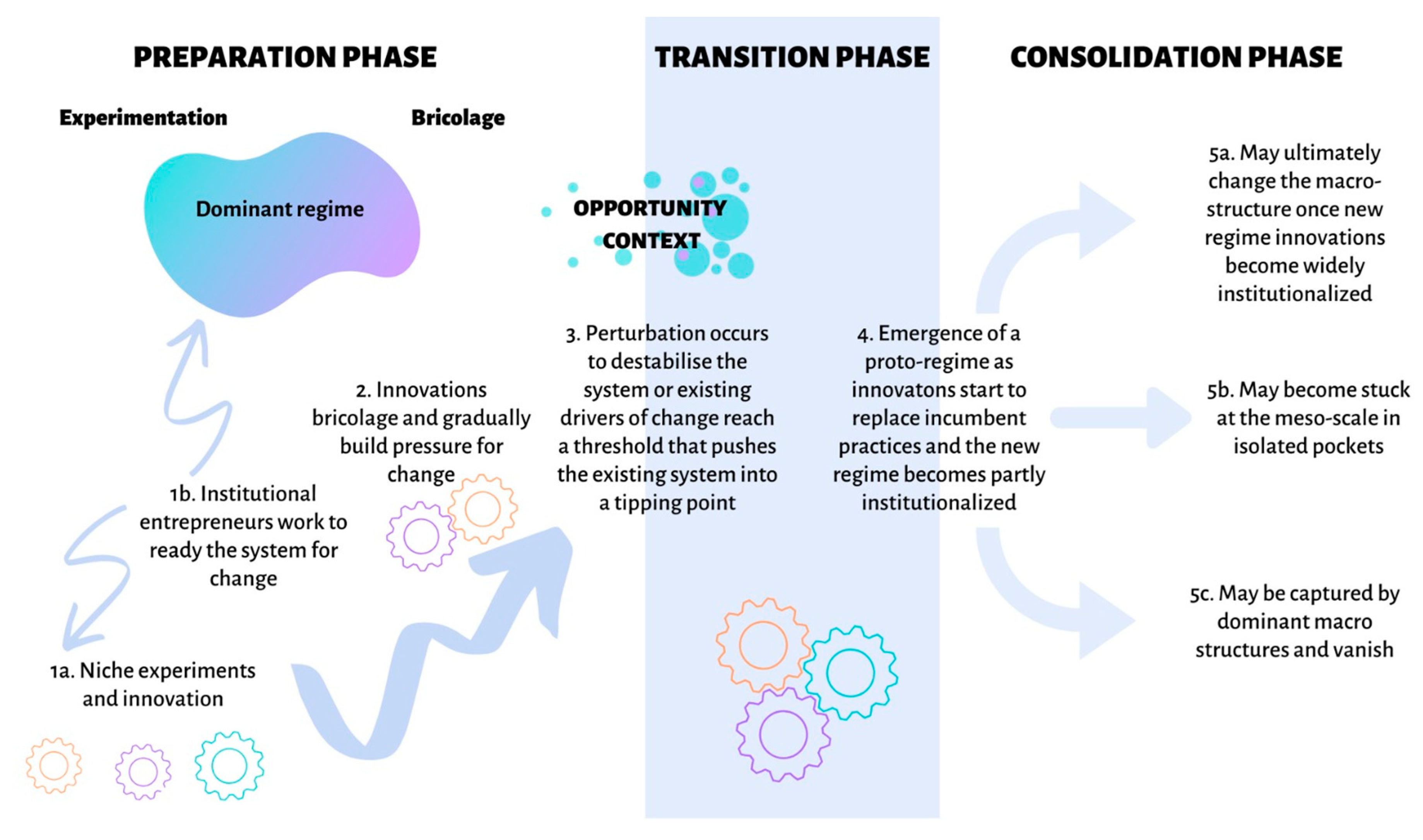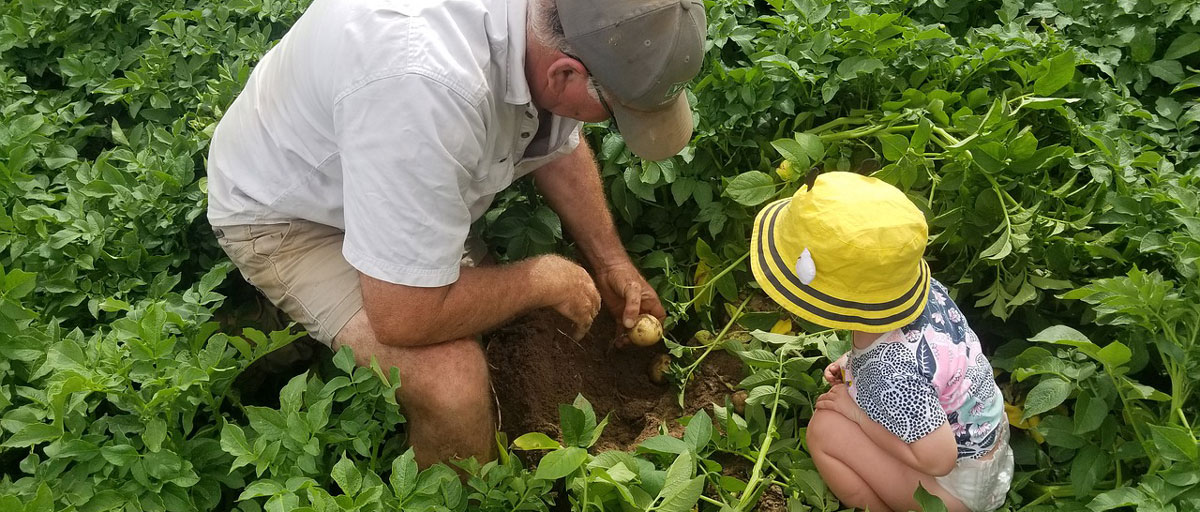Bildtext får vara max två rader text. Hela texten ska högerjusteras om den bara ska innehålla fotobyline! Photo: B. Christensen/Azote
FOOD TRANSFORMATION
Past insights can shape future food systems

The shift from locally-procured food to store-bought food, driven by the rise of the supermarket, is one of three key innovations in the Global North that induced critical changes in the food systems globally. Insights from these changes can offer guidance on how to shift the global food system onto a new trajectory. Photo. D. Hochman/Flickr
- Perspectives from social and natural sciences can offer insights on how to shift the global food system
- Three key innovations in the Global North induced critical changes in the food systems globally
- A reflection on past regime shifts can help tap into the nascent potential of future regime shifts
Three major innovations helped shape the global food system in the past. How can we learn from them to develop a more sustainable system for the future?
TAPPING INTO NASCENT POTENTIAL: Our food system is in dire need of a transformation. Current production and consumption patterns are causing serious environmental degradation and undermine human well-being in a number of ways.
Authors of a recent article published in the International Journal of Environmental Research and Public health suggest that perspectives from both social and natural sciences can offer new insights on how to shift the global food system onto a new trajectory.
Lead by centre researcher Laura Pereira together with colleagues from South Africa and Germany, the authors argue that social and technical innovations can be particularly powerful for initiating widespread disruptions.
Any sustainability transformation requires recognition of power and politics, as well as a systemic understanding of how complex social-ecological systems work and change.
Laura Pereira, lead author
Innovations drive regime shifts
In their analysis of past regime shifts, the authors highlight how three key innovations in the Global North induced critical changes in the food systems globally:
(1) the shift from low-input labor-intensive farming to commercial-industrial agriculture, driven by the invention of fertilizers and new technologies
(2) the shift from locally-procured food to store-bought food, driven by the rise of the supermarket and fast, convenience foods
(3) the shift from anonymous global supply chains to alternative food networks, driven by an increasing demand for local food and certification

Three phases whereby innovations can cause a system to undergo a regime shift, or transform from one system state to another. Click on illustration to access scientific article.
Nudging future innovation
"A reflection on past regime shifts can help tap into the nascent potential of future regime shifts," adds co-author and centre researcher Oonsie Biggs.
This can be done by helping identify leverage points, intervening to facilitate transformation of the system, or push a failing system towards a tipping point.
However, she warns, the question remains as to how to bring about the necessary transformations while taking into account local contexts, especially in the Global South where an array of political economic and social-ecological issues coexist.
Using an example from South Africa, the authors argue that sustainability regimes importantly need to disrupt conventional top-down solutions by initiating from the bottom-up.
The authors conclude that alternative global food system embedded in local realities can emerge as a counterweight to global actors who, during colonization and globalization, have been able to capture previous innovations to further their own ends.
Podcast: The role of food in the pandemic: food security, shocks and transformations
Methodology
The authors connect different disciplinary understandings of food system change in order to understand how we can create better food systems in the future. Drawing from literature, the authors combine two perspectives on regime shifts to understand key drivers behind past structural shifts: the political-economy perspective, derived from social sciences, and the social-ecological systems perspective, derived from natural sciences.
An interpretation of food regimes is then further developed using three case studies drawing from innovation theory, namely the Haber-Bosch process of nitrogen fixation, the rise of the supermarkets, and the modern call for increased transparency and reconnection of the consumer with food. An example from a Global South context is then used to reflect on some key sustainability and equity challenges of driving a global transformation of food systems while keeping in mind the local context.
Pereira, L., Drimie, S., Maciejewski, K., Bon Tonissen, P., Biggs. R. 2020. Food System Transformation: Integrating a Political–Economy and Social–Ecological Approach to Regime Shifts. Int. J. Environ. Res. Public Health 2020, 17(4), 1313; https://doi.org/10.3390/ijerph17041313
For more details about the publication, please contact Laura Pereira:










